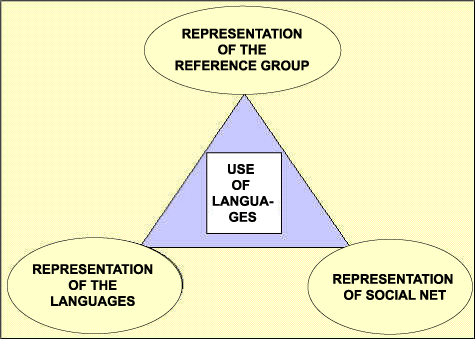
| Sociolingüística catalana |
| Summer 2002 |
Uses and social
representations of languages in the Balearic Islands, |
||||
| Summary
3. The new theoretical framework 5.
Results One of the main aims of social science research is to be able to make predictions. The model that we have designed allows us to arrive at this point. However, before doing so, we will present the description of language uses, the explanation of these uses and finally, the predictions for future uses that we discuss in this article. For our description, we need to find out the language uses of fourth-year ESO pupils. As regards the explanation, we want to find out the main variables that favour the use of Catalan, and as for predictions, we will reveal the prospects for use indicated by our theoretical and methodological model. Overall, therefore, our aim is to corroborate this new model again – as we did with Catalonia in 1993 and 2000, the Valencian Country in 1998 and, as we stated above, we are now testing in Andorra. (1) 3. The new theoretical framework A new theoretical framework was required to obtain this type of explanatory and predictive data, since the results obtained with the concept of language attitude were not statistically significant (Wicker 1969). We have presented this new proposal on a number of occasions, including in this journal (Querol 2001a). (2) Figure 1 summarises our theoretical model for the study of language uses (dependent variable). The independent variables will be: - social
representations of languages, (3) Figure 1. Relations between the independent variables and the dependent variables (use of languages)
Source: Own work. All of the independent variables relate to each other and to the dependent variable, i.e. they feed from one another. The hypotheses we put forward initially focused on the relationships between all of these. We shall see these hypotheses now. |
